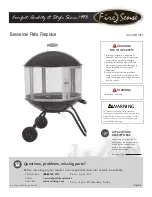
9
Condensate disposal
Condensate drain
1. This water heater is a high efficiency appliance that
produces condensate.
2. The rear of the water heater has a 1/2 inch (12.7 mm)
PVC union for connection of a 1/2 inch (12.7 mm) PVC
pipe (FIG. 9-1).
3. Slope condensate tubing down and away from the water
heater into a drain or condensate neutralizing filter.
Condensate from the Armor X2 will be slightly acidic
(typically with a pH from 3 to 5). Install a neutralizing
filter if required by local codes.
A Neutralizer Kit (FIG. 9-1) is available from the factory
(KIT3046).
4. Install the 1/2 inch (12.7 mm) PVC elbow (field provided)
as shown in FIG. 9-1.
5. Do not expose condensate line to freezing temperatures.
Use materials approved by the authority
having jurisdiction. In the absence of other
authority, PVC and CPVC pipe must
comply with ASTM D1785 or D2845.
Cement and primer must comply with
ASME D2564 or F493. For Canada use
CSA or ULC certified PVC or CPVC pipe,
fittings, and cement.
6. A condensate removal pump is required if water heater is
below drain. When installing a condensate pump, select
one approved for use with condensing water heaters and
furnaces. The pump should have an overflow switch to
prevent property damage from condensate spillage. The
switch should be wired to the auxiliary device proving
switch terminals on the low voltage connection board.
NOTICE
NOTICE
To allow for proper drainage on large
horizontal runs, a second line vent may
be required and tubing size may need to
increase to 1 inch (25 mm).
The condensate line must remain
unobstructed, allowing free flow of
condensate. If condensate is allowed to
freeze in the line or if the line is obstructed
in any other manner, condensate can
exit from the water heater, resulting in
potential water damage to property.
Figure 9-1 Condensate Disposal
44
Installation & Operation Manual
















































